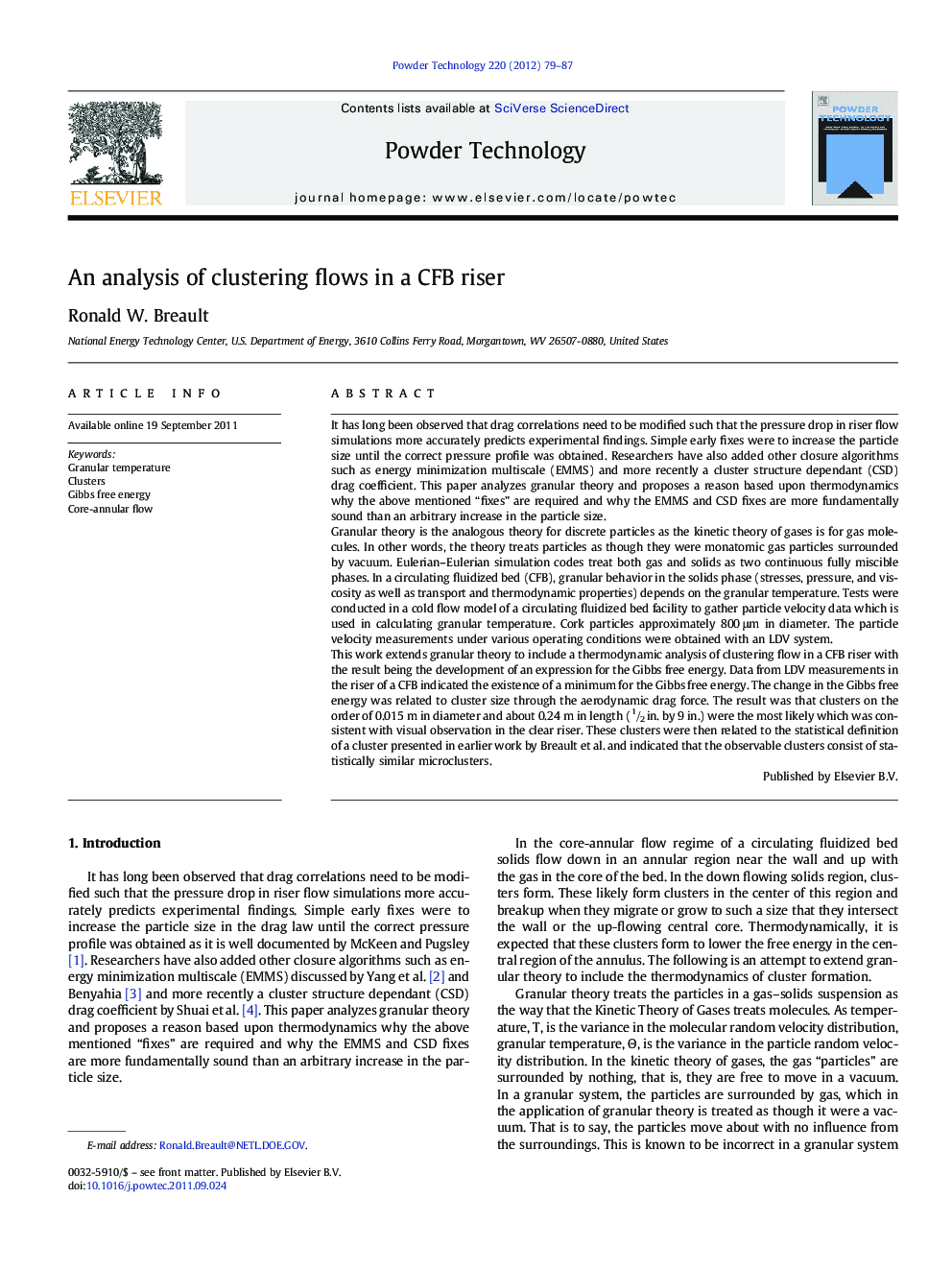| کد مقاله | کد نشریه | سال انتشار | مقاله انگلیسی | نسخه تمام متن |
|---|---|---|---|---|
| 237296 | 465700 | 2012 | 9 صفحه PDF | دانلود رایگان |

It has long been observed that drag correlations need to be modified such that the pressure drop in riser flow simulations more accurately predicts experimental findings. Simple early fixes were to increase the particle size until the correct pressure profile was obtained. Researchers have also added other closure algorithms such as energy minimization multiscale (EMMS) and more recently a cluster structure dependant (CSD) drag coefficient. This paper analyzes granular theory and proposes a reason based upon thermodynamics why the above mentioned “fixes” are required and why the EMMS and CSD fixes are more fundamentally sound than an arbitrary increase in the particle size.Granular theory is the analogous theory for discrete particles as the kinetic theory of gases is for gas molecules. In other words, the theory treats particles as though they were monatomic gas particles surrounded by vacuum. Eulerian–Eulerian simulation codes treat both gas and solids as two continuous fully miscible phases. In a circulating fluidized bed (CFB), granular behavior in the solids phase (stresses, pressure, and viscosity as well as transport and thermodynamic properties) depends on the granular temperature. Tests were conducted in a cold flow model of a circulating fluidized bed facility to gather particle velocity data which is used in calculating granular temperature. Cork particles approximately 800 μm in diameter. The particle velocity measurements under various operating conditions were obtained with an LDV system.This work extends granular theory to include a thermodynamic analysis of clustering flow in a CFB riser with the result being the development of an expression for the Gibbs free energy. Data from LDV measurements in the riser of a CFB indicated the existence of a minimum for the Gibbs free energy. The change in the Gibbs free energy was related to cluster size through the aerodynamic drag force. The result was that clusters on the order of 0.015 m in diameter and about 0.24 m in length (1/2 in. by 9 in.) were the most likely which was consistent with visual observation in the clear riser. These clusters were then related to the statistical definition of a cluster presented in earlier work by Breault et al. and indicated that the observable clusters consist of statistically similar microclusters.
Journal: Powder Technology - Volume 220, April 2012, Pages 79–87